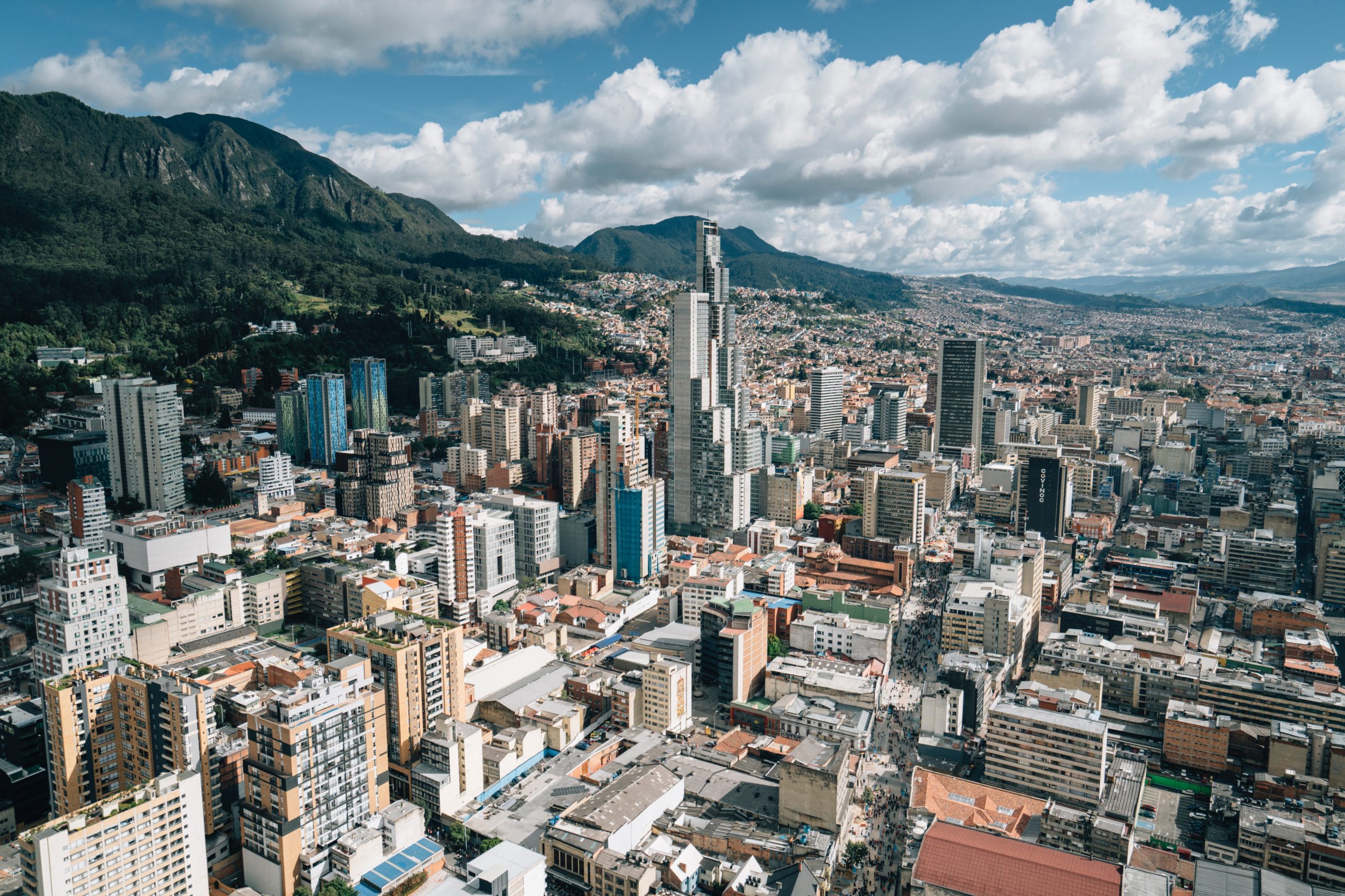English teacher in colombia
Do you want to teach English in Colombia? If so, then I’m sure you’ve been wondering: What is the everyday life of an English-speaking teacher in Colombia? Although Colombia may not have had the best reputation in its past, it is fast becoming a preferred destination for TEFL instructors due to its high salaries and growing number of English-teaching jobs in Medellin/Bogota.
Why should you teach English in Colombia?
Colombia is a stunning country. A one-hour flight will take you to a different place. You’ll find yourself in an entirely new landscape. Colombia is one the most biodiverse nations in the world. Its location near the Equator means that it doesn’t have seasons. Temperature varies according to altitude. The higher up you are, the cooler it will be. Colombian food is delicious, fresh, and local. Its people are also among the friendliest around the globe.
Which areas/cities are the best for English teaching jobs?
Many of the English-speaking jobs in Colombia include those in Bogota, Medellin, Cali, Barranquilla, Bucaramanga and Cartagena. However, there are also opportunities in the province capitals. Jobs in rural areas are also available, and offer higher salaries and benefits such free housing.
What types of English teaching jobs can you find in Colombia?
There are many opportunities to teach English here in Colombia. English teachers are hired in large and small cities alike. Colombia has a requirement that every school teach English at a lower or intermediate level and has resulted in a huge demand for teachers in the public schools. Colombia’s largest cities are home to many private, fee-paying schools. Most of them offer English instruction at high levels as well as in other languages. Some of these international private schools exist.
Colombia is also an emerging and rapidly developing country. Many multinational companies have established their headquarters in Bogota, the capital of Colombia, and Medellin, its second-largest city. Many private language institutes are paid to help these company employees communicate with foreign branches. These classes aren’t necessarily full-time, but they have a high demand and teachers can have a full time schedule by working for different companies.

People learning with a English teacher in colombia
What qualifications are required to teach English in Colombia
A bachelor’s degree is required to teach English in Colombia. Although a TEFL/CELTA/TESOL certificate can be regarded favorably, it is not mandatory. While schools prefer to hire teachers who are experienced, they will train new staff.
A TEFL certificate is required to work in most of the English-speaking teaching institutions in Colombia. However, teaching institutions like the British Council and International House and Universities require at least a CELTA/Trinity certification TESOL qualification.
Public schools are also looking for candidates with experience in other areas of teaching. Many of them use the CLIL method to hire international teachers for classes like Religion, Ethics, History and Science.
What work permits or visas do you require to teach English in Colombia?
An M visa is required in order to work as an English teacher or interpreter in Colombia. These visas can be granted for up to three years, depending on the contract. It is easy to apply for an M visa.
Many schools and institutions will help you with the visa process, and send the applicant a detailed list with everything required, such as an apostille, proof of experience, passport information, and other documents. To speed up the process, it is recommended that you have an apostille prepared before entering Colombia. To learn more about the process of having your documents apostilled see our article here (insert link to article)
You will also need a Cedula, a Colombian identification card that costs 217.500 pesos. This card is used to open bank accounts, as well as act as a general identification.
What is it like to be a teacher of English in Colombia
Colombia is an exciting place to teach English. Colombia is a country where foreign teachers can teach English at all levels. The educational expenditure has more than doubled in the last 20 years. You need to be familiar with the phases you will go through when starting your teaching career in Colombia, regardless of whether you live in the capital city of Bogota, the hills/rural community or the modern Medellin.
As with any teaching abroad experience, it will be a rollercoaster ride of emotions.
Knowing what to expect will help you to adapt to Latin American culture. These are the phases you should expect in your first few days (or even weeks) of teaching
Here are 2 great videos from alumni from International TEFL Academy as they discuss their personal experience teaching English in Medellin and Bogota Colombia.
https://www.youtube.com/watch?v=iSB3ajpFhm8
https://www.youtube.com/watch?v=fKnwIWSPiJg
Phase 1: Que chevere es Colombia!
It’s all perfect and amazing and you have never seen anything more beautiful. Colombia’s diverse cuisine, culture, language, and hospitality will sweep you off your feet upon your arrival. You’ll want to see and do everything. You will be bombarded by accents and slang that you didn’t learn in high school Spanish classes. You will want to learn every Spanish phrase. It will be exhausting to learn so much Spanish, but you’ll soon start to refer to “cool” things like “bacano” and “chevere.”
It is exciting to teach English in Colombia because of its geographic diversity and linguistic diversity. It is a great place to explore national parks, waterfalls, coffee farms, and canyons. You will also find countless museums, galleries and festivals that will satisfy your cultural cravings. It’s easy to feel like you are in a honeymoon phase, only to find out that it isn’t. But wait…
Phase 2 – Everything I thought was true about Colombia was wrong.
The media, your family, friends, even the people you met at the airport and shared your plans to move to Colombia to teach all seemed to strongly disagree with your decision to seek a teaching job here in Colombia. They told you it was too risky. It’s too far away. It’s too much of both. On a personal note: I have found Colombia no more dangerous than any other big city such as Miami, Atlanta, or Chicago. While Colombia may have a complicated and difficult history, the present is bright for this Latin American nation.
Here’s a PSA. Colombians do not appreciate jokes, comments, and innuendos that are narcotics trafficking related. Bogota and Medellin used to be among the most violent places in the world for drug trade violence just two decades ago. Colombia’s reputation for being a dangerous and unpopular tourist destination is beginning to fade.
Medellin used to be the home base of Pablo Escobar (the Colombian drug lord), but it’s now one of the most innovative and creative cities. People are proud to boast about the country’s only metro system. It is spotless. It’s not allowed to be drank or eaten inside. Do not miss the metrocable cable cars that take people up the hills. Medellin feels more like a large, efficient city than a warzone.
Phase 3: Where’s my student? !
Colombian students may have a more relaxed approach to classroom etiquette than they are used to. Colombians will say that they are ‘descomplicados’ which means they don’t get overly excited about things. This attitude has affected the education system for better or worse. It makes punctuality more gray than in English-speaking nations. Students and teachers might be late to classes.
Private schools have more well-structured absence policies and consequences that public schools.
Be prepared to be called by your first name by your children. It is normal for students to call their professors by their first name.
Phase 4: I AM RICH!
It is an affordable country in which to live and travel, so it is possible that you will save a lot of money while teaching in Colombia. You can expect to make between $500 and $3,000 per month depending on where you work and your experience. A nice one-bedroom apartment can be rented in most Colombian cities, for as low as $400 per month.
You can find delicious, affordable street food such as ground beef empanadas and bunuelos. Market comedors are popular among locals as they offer a way to save money and because you’re familiar with the area, you can get information about what’s happening. It’s easy to chat with vendors and bargain for souvenirs and produce for your family and friends. You are happy and full, as is your wallet.
Phase 5 – I Have so Much Energy?
Teaching can be hard work and exhausting. But Colombia will shock you with the amount of time you will have. This will make you feel much more rested than what you thought. No more late nights studying and lesson planning (unless your a night owl).
Primary and middle schools often offer morning and/or afternoon sessions. This allows teachers to adjust their schedules to meet enrollment requirements. You could have all mornings off or not be able to get to school until noon. Or you might get up earlier and have the whole afternoon off. In addition, classes are cancelled for patronal fiestas that take place throughout the year.
Phase 6: I love my job!
There will be ups and downs. But at the end of it all, you love your students and your job. You are a rock star in the classroom and have plenty of time to enjoy life and all the Cultural experiences Colombia has to offer.
You have a strong relationship with your students and colleagues, and you feel confident in your ability. The urge to leave and head home is a distant memory as you know that you will make it through the year. Your classroom is the best place to be. Although the roller coaster ride isn’t over, it’s not something you can’t handle.
Bonus 7: Return to the roller coaster. I WANT ALL THINGS!
You can now start crossing things off your bucketlist, once things have settled down. You can take advantage of weekends and bank holidays to see all that Colombia has to offer.
Bogota and Medellin have a wide range of activities including theater, museums and salsa dancing lessons. Local festivals such the Rock al Parque can be attended, which is Latin America’s largest free rock concert. Bogota also hosts an LGBT pride parade every year. You can’t miss Barranquilla’s Carnaval de Barranquilla if you’re along the coast. Graffiti and intricate murals featuring animals,
politicians, actors, and landscapes can be found along the streets. These street art pieces give these cities their unique character.
Central Colombia’s highlands contain forests, tobacco and coffee farms, waterfalls, and Chicamocha Canyon. It is the second-largest canyon on the planet. You can take a weekend bike trip along the canyon and stop for sunset. Other attractions include the Tayrona-National Park and the enormous wax palms of Valle de Cocora (in the Salento coffee region) as well as the breathtaking Cano Cristales river, which is Quartz-filled with a kaleidoscope.

